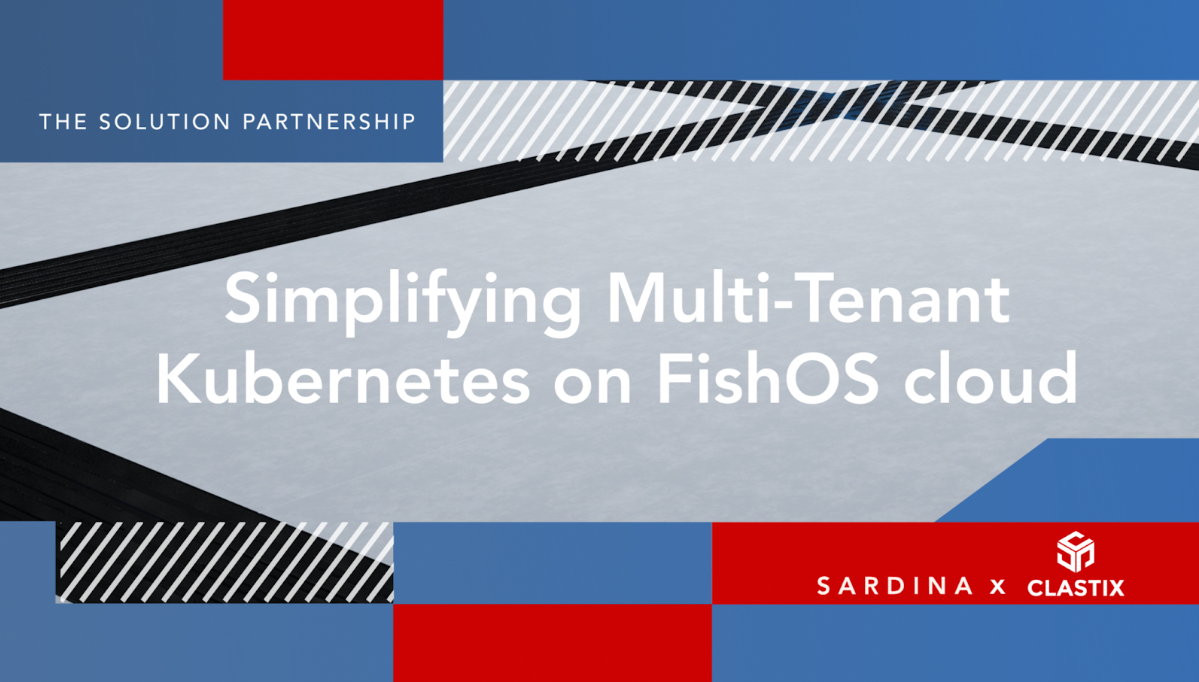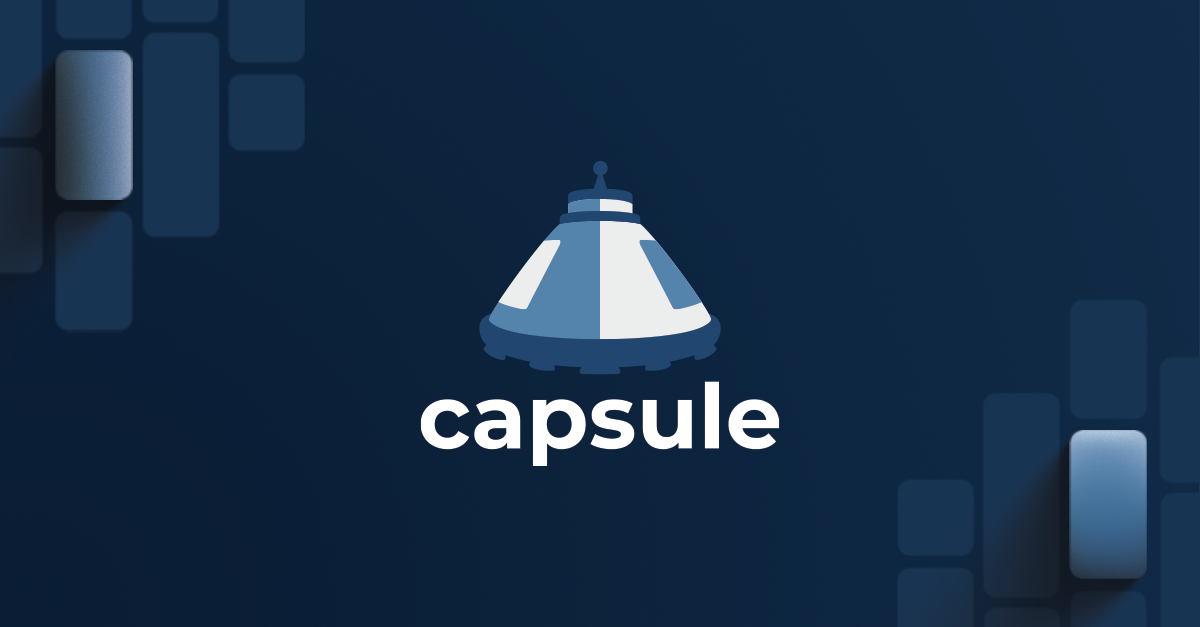
Clastix Blog
Recommended Articles
Last Post

Sardina Systems and Clastix Partner to Deliver Managed Kubernetes on FishOS
Simplifying Multi-Tenant Kubernetes on FishOS cloud
All Posts
GPU-Based CaaS, Platform Engineering, and the Future of Multi-Tenancy
In one of the most insightful technical posts of the year, Landon Clipp published a brilliant deep-dive into what it actually takes to build a GPU-based Containers-as-a-Service (CaaS) platform on modern NVIDIA HGX systems.

Hosted Control Planes and Bare Metal: What, Why, and How
A deep dive into Hosted Control Planes: what they are, why they matter and how to run them in practice.

Empowering Cloud Providers with Sveltos and Kamaji
Customer Spotlight: How Dinova built a Scalable and Resilient Managed Kubernetes Service.

NeoClouds? Stop Renting Hardware And Start Building Platforms.
The NeoCloud Opportunity: Transitioning from Hosting to Cloud-Native Platforms

Immutable Kubernetes Nodes with Kairos and Kamaji: A Security-First Architecture for the Edge and Beyond
In a world increasingly defined by cloud-native infrastructure and zero-trust principles, immutability is emerging as a foundational pillar for secure, predictable, and manageable Kubernetes deployments. This is especially relevant in bare metal and edge use cases, where traditional rolling upgrade strategies often fall short.

Why NVIDIA Chose Kamaji for the DOCA Platform
In recent years, NVIDIA has become a major force not just in graphics and AI, but also in transforming the data center. With its BlueField Data Processing Units (DPUs) and the DOCA software framework, NVIDIA is redefining the architecture of modern infrastructure

So long OpenShift, and thanks for all the fish
You keep wearing the same hat and wondering why everything looks the same: maybe it's time for a new fit.

Interview with Shaik Zoheb
Shaik Zoheb is a Kamaji project ambassador based in the United Arab Emirates. He focuses on promoting the Hosted Control Plane architecture, particularly on networking integration and optimization using Konnectivity.

Trident, Kubes, and Containers: NetApp reference architecture
Managing multiple Kubernetes clusters can be resource-intensive and complex, especially for service providers, hosting companies, or large enterprises. An effective strategy to streamline operations and optimize resources involves integrating Kamaji by CLASTIX with NetApp's Trident.

Cubes, Pipes, Power, and GPUs: Building a Cloud for AI
Artificial Intelligence (AI) is transforming industries at an unprecedented pace, with Generative AI driving much of the change over the past two years. For both Public and Private Cloud Operators, mastering the design of scalable, efficient, and secure AI infrastructures is crucial to remaining competitive. This piece provides a roadmap for navigating the technical challenges and seizing the opportunities in building cloud infrastructures tailored for the next generation of AI-driven technologies.

Datacomm builds top-tier Managed Kubernetes Service with Kamaji
Datacomm, a leading Indonesian Cloud Provider, has initiated a collaboration with Clastix to develop a Managed Kubernetes Service. This strategic partnership leverages Clastix's innovative software solution, Kamaji, to deliver robust and scalable Kubernetes services, setting a new standard for cloud infrastructure in Indonesia.

Kamaji sets a new standard for Hosted Control Planes architectures
The Kamaji v0.6.0 release besides welcoming new contributors introduces exciting features and enhancements, setting a groundbreaking level to the Hosted Control Plane architecture.

Clastix for Managed and Cloud Service Providers
Managed Service Providers (MSPs) and Cloud Service Providers (CSPs) play a critical role in the adoption of containers and Kubernetes, helping enterprises transform their legacy stacks by providing access to Cloud Native Solutions and bridging gaps between cutting-edge technology and the enterprise. CLASTIX introduces a new program for MSPs/CSPs, helping them to build leading cloud-native solutions for their customers.

Clastix joins Linux Foundation Europe
In the wake of recent turbulence within the open-source software industry, highlighted by supply chain attacks, licensing changes and companies shut down, Clastix's decision to join the Linux Foundation Europe stands as a commitment to the open-source values.

Simplify GPUs usage across any Kubernetes Cluster
Clastix announces a new Serverless GPU solution developed in partnership with Seeweb, Italy's leading provider of cloud infrastructures for Artificial Intelligence.

CLASTIX Lights Up Paris: Join Us at KubeCon + CloudNativeCon Europe 2024!
As proud member of Cloud Native Computing Foundation, CLASTIX is sponsoring the KubeCon + CloudNativeCon EU 2024 in Paris, from 19 - 22 March 2024. Meet us at booth D32.

The need for Platform Engineering in ML/AI Operations
As the field of Artificial Intelligence (AI) and Machine Learning (ML) Operations matures, it is necessary to transition from the pioneering phase to a more structured and systematic approach, similar to the evolution seen in general software development with the advent of Platform Engineering movement, to enhance operational efficiency, reduce costs, and streamline processes in ML/AI operations.

Overcoming EKS limitations with Kamaji on AWS
Amazon EKS, besides being one of the most used Kubernetes distributions and managed Kubernetes service worldwide, brings several limitations: in this blog post, we discover how Kamaji can overcome these, maintaining the same ease of a managed service thanks to its Auto-Pilot feature.

The raise of Hosted Control Plane in Kubernetes
In the early days of Kubernetes adoption, single-cluster deployments were the norm, offering a straightforward approach to managing applications and services. As the adoption of Kubernetes expanded, the limitations of single-cluster models surfaced. The increasing demand for Kubernetes clusters requires a shift to multicluster deployments and an innovative Hosted Control Plane architecture.

Bridging the Gap: Hybrid Kubernetes Clusters with Remote Control Planes
As organizations continue to navigate the complex landscape of container orchestration, Kubernetes stands out as a leading solution for deploying, managing, and scaling containerized applications.

Netsons builds a Managed Kubernetes Service with Kamaji and OpenStack
Netsons, a leading hosting and cloud service provider, has successfully pioneered a transformative approach to Managed Kubernetes Services through a strategic partnership with Clastix. This collaboration, featuring the integration of Clastix Kamaji with Netsons robust OpenStack infrastructure, marks a significant advancement in delivering top-tier cloud solutions to clients across Italy and Europe.

Optimizing Kubernetes on Equinix: A Dive into Bare Metal, Kamaji, and the Cluster API
Kubernetes on bare metal maximizes performance by eliminating virtualization overhead, providing direct access to physical hardware resources. This minimizes latency, optimizes resource utilization, and ensures consistent, high-speed communication between containers, making it an ideal choice for performance-critical workloads.

Edgevolution: Unleashing the Power of Kubernetes Clusters for a Revolutionary Edge Computing Experience
Kubernetes at the edge extends the powerful container orchestration capabilities of Kubernetes to decentralized environments. It enables the efficient management and deployment of containerized applications on edge devices, reducing latency, enhancing scalability, and supporting real-time processing closer to data sources.

The Value of Commercial Subscriptions for Open-Source Projects
Open-source software has become the backbone of modern technology, powering everything from operating systems to Web browsers and applications. Its collaborative nature fosters innovation and enables a wide range of solutions to common problems. However, as the popularity of open-source projects grows, so does the need for robust support and security measures. In this article we will explain how offering a commercial-grade solution to an open-source project such as Capsule is not only consistent with the project but also essential to its success.

Scaling Cloud Services with Multi-Tenancy: the ReeVo Journey
When your mission is running critical applications in the cloud, having a trusted wingman at your side makes all the difference. So ReeVo, a leading cloud provider, partnered with Clastix, the Kubernetes multi-tenancy experts, to enhance its cloud services and offer unprecedented agility, scalability, and flexibility to its customers. By adopting Kubernetes and Clastix's multi-tenancy solutions, ReeVo simplified the management of hundreds of customers, reduced hardware resources and operational efforts, and at the same time achieving greater automation and innovation.

A Future-Ready Solution for Kubernetes Control Plane
Kubernetes is a powerful tool for container orchestration, but managing its control plane can be challenging, especially when running multiple clusters on different infrastructures and cloud providers. In this article, we'll explore Kamaji, Clastix's innovative architecture for simplifying control plane management and how it can make running multiple Kubernetes clusters on any infrastructure a breeze.

Military Simulation as a Service: how Capsule made it possible
In this interesting article, we delve into the current law & enforcement applications of K8s and hypothesize even more interesting uses that have barely been tested in the defense field.

Multi-Tenancy in the financial sector: a reference architecture for AWS
CLASTIX is working on evangelizing the benefit of addressing multi-tenancy on Kubernetes in the right path, as we’re working on drafting the first-ever State of the Multi-Tenancy report.

The role of open source in data sovereignty
Open source technology is essential for European countries to achieve data sovereignty and independence from American and Chinese regulations, while fostering innovation and providing greater security and privacy over data.

A Managed Kubernetes Service from the heart of the Europe
When running mission critical applications in the cloud, a partner you can rely on makes all the difference. So C41, an indie Swiss based Cloud and Managed Service Provider, partnered with CLASTIX to provide a fully Managed Kubernetes Service for reliable, safe, secure and armoured operations in Europe.

Operate Kubernetes as a HyperScaler
CLASTIX is now a SUSE ecosystem partner. Customers can now take advantage of innovative solution that benefits from SUSE’s decades of engineering excellence and open source leadership coupled with CLASTIX’s unique multi-tenant architecture for Kubernetes.

The Kubernetes Explorers
How to access deep expertise around Kubernetes and Cloud Native ecosystem

Meet CLASTIX at KubeCon + CloudNativeCon North America 2022
As proud member of Cloud Native Computing Foundation, CLASTIX is sponsoring the KubeCon + CloudNativeCon in Detroit, Michigan (US) from 24 - 28 Oct. 2022. Meet us at booth SU6.

How to Install Capsule on KIND
In this post, we will show you step by step how to install Capsule on KIND to bring multitenancy to your local cluster.

Capsule v0.1.2 has been released!
Discover all the great new features of the Capsule V0.1.2 release!

Secure Multi-Tenancy for Charmed Kubernetes with Clastix’ new Charmed Operator
Capsule helps reduce the operational effort to operate and maintain secure multi-tenancy on Charmed Kubernetes. Users, teams, and departments can now share the same infrastructure without compromising security and usability.

Clastix partners with CloudCasa by Catalogic to provide self-service backup
Kubernetes multi-tenancy is the ability to run workloads belonging to different subjects such as users, groups, and departments, in such a way that each subject’s workloads are isolated from each other. Multi-tenancy is becoming an important topic as more and more organisations adopt Kubernetes on a larger scale.

Clastix launches Kamaji a new open source tool for Managed Kubernetes Service
At CLASTIX, we're proud to announce Kamaji a new open-source tool to build and operate Managed Kubernetes Services with unprecedented ease.

Meet CLASTIX at KubeCon + CloudNativeCon Europe 2022
As proud member of Cloud Native Computing Foundation, CLASTIX is sponsoring the KubeCon + CloudNativeCon in Valencia, Spain from 16 - 20 May 2022. Meet us at booth SU40.

Offering support options for Clastix Open Source solutions
Although Capsule is an open-source solution and therefore is supported by the community, as more customers are adopting the solution, they are interested in getting support directly from CLASTIX.

The value of Kubernetes and Multi-Tenancy realised by Fastweb
With rapid adoption of Kubernetes, as the most valuable platform to deliver cloud native applications, multi-tenancy is becoming a de-facto consideration to be part of the initial architecture to achieve a highly efficient, agile and cost effective infrastructure.

Netherlands National Railway adopts Capsule multi-tenancy operator for an efficient modern hybrid-cloud platform
While we have been sharing the values and enhancements that customers can get from using Capsule, our multi-tenancy solution for Kubernetes, we thought it would be helpful to share a real life example of the use case for multi-tenancy as part of a larger project

Expanding Kubernetes ResourceQuota with Capsule v0.1.1
As multi-tenancy continues to remain a hot topic in the market, we are proud to announce the next release of Capsule multi-tenancy operator v0.1.1!

Multi-tenancy options for Kubernetes: Tenant, or Namespaces? Pick at least one!
With the accelerating adoption of Kubernetes the dilemma of multi-tenancy is gaining more traction and being more hot and relevant. Implementing a multi-tenancy architecture is proving to be one of the more strategic decisions that need to be considered when implementing Kubernetes-based infrastructure, as it has long term implications to operational efficiency, scale velocity and costs.
